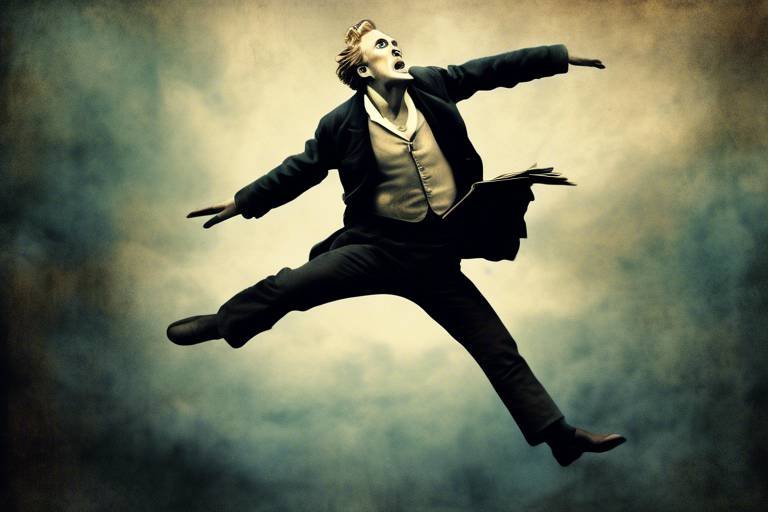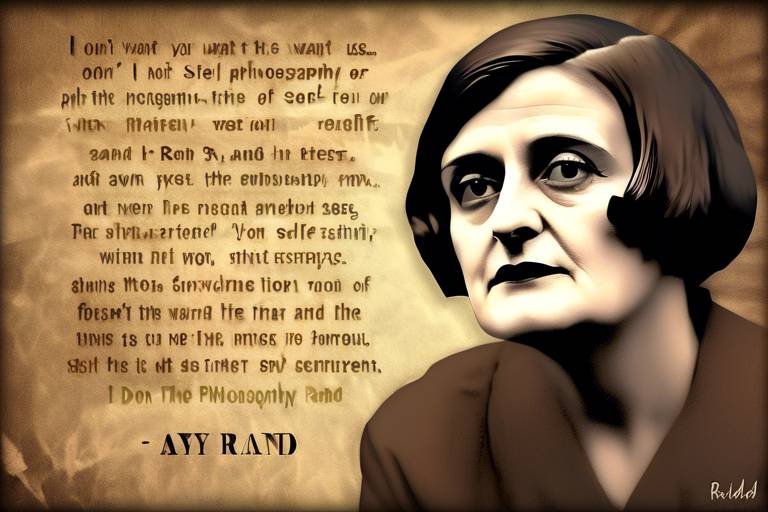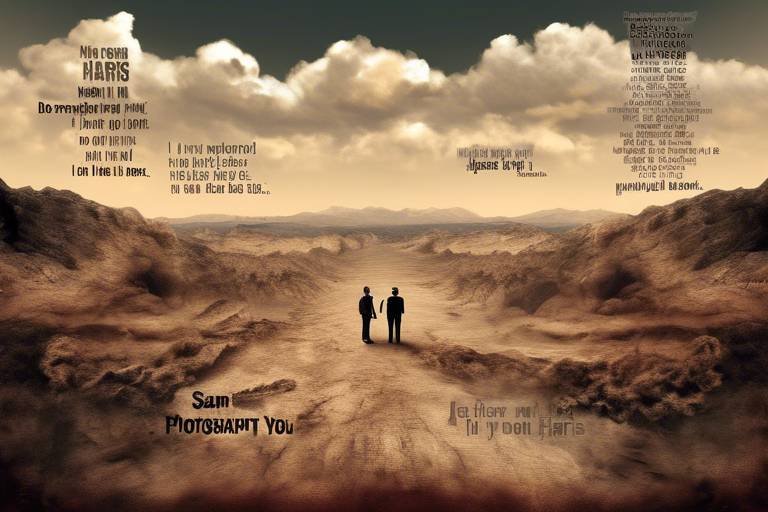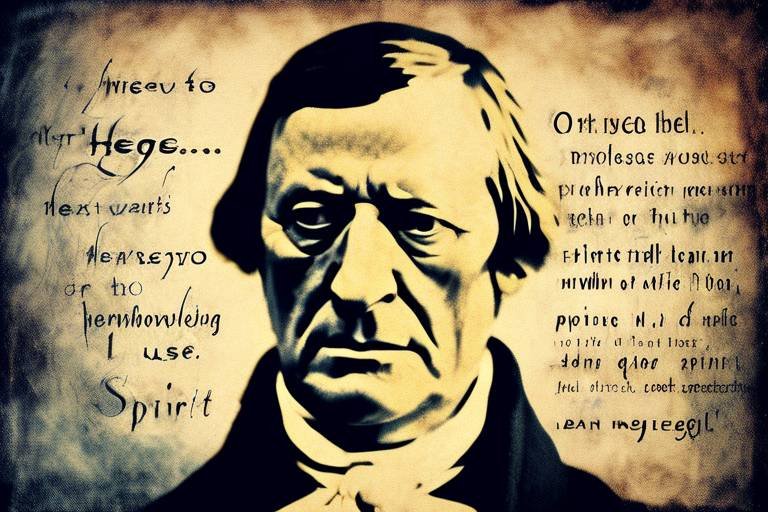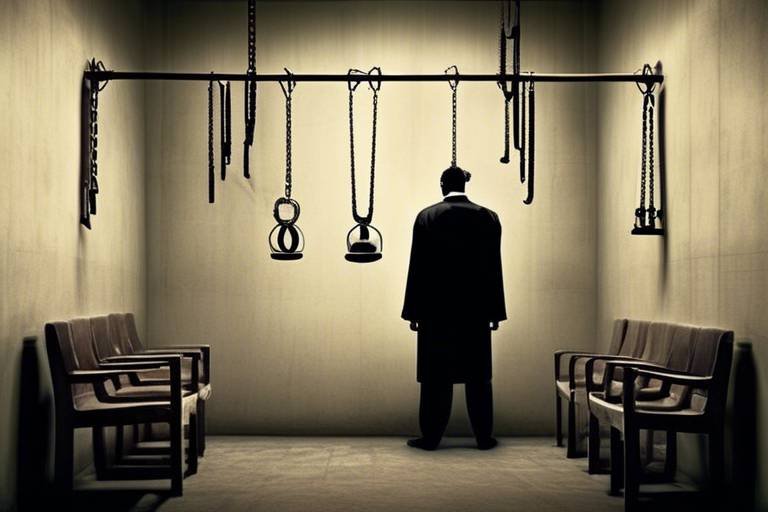Analyzing Kierkegaard’s Leap of Faith
Søren Kierkegaard, often hailed as the father of existentialism, introduced the concept of the leap of faith, a profound idea that challenges our conventional understanding of belief and existence. This article takes you on a journey through Kierkegaard's philosophical landscape, examining how this leap is not merely a philosophical abstraction but a deeply personal endeavor. So, what exactly does it mean to take a leap of faith? And why should we care about it in our modern lives? Let's dive in!
Kierkegaard's leap of faith is deeply rooted in existential philosophy, which emphasizes the importance of individual experience and the subjective nature of truth. Unlike traditional philosophical frameworks that prioritize objective reasoning, Kierkegaard argues that understanding faith and existence requires a personal touch. He believes that each individual must confront their own uncertainties and make choices based on their unique experiences. This is where the leap comes into play: it’s about embracing the unknown and stepping into a realm where faith transcends rationality.
To grasp Kierkegaard's perspective on faith, we must acknowledge its inherent paradoxes and complexities. Faith, in his philosophy, is not a blind acceptance of dogma; rather, it is a deeply personal commitment that often coexists with doubt. For Kierkegaard, faith is a passionate engagement with existence, where one must navigate the turbulent waters of uncertainty. This stands in stark contrast to traditional religious interpretations that often present faith as a straightforward belief in divine truths. Instead, Kierkegaard invites us to see faith as a dynamic and evolving journey.
Doubt is not the enemy of faith; in fact, it plays a crucial role in Kierkegaard's leap of faith. Embracing doubt allows individuals to question their beliefs, leading to a more profound understanding of what faith truly means to them. By acknowledging our uncertainties, we can cultivate a faith that is not merely inherited but personally owned. It’s like being on a tightrope; without the fear of falling, we might never appreciate the thrill of balancing our beliefs against the weight of doubt.
Kierkegaard highlights the paradoxical nature of faith, where certainty and uncertainty coexist in a delicate dance. This paradox challenges conventional beliefs and encourages personal exploration. It's akin to standing at the edge of a cliff, where one must decide whether to jump into the unknown. The leap requires courage, as it involves relinquishing the comfort of certainty for the possibilities that faith can offer. This duality is what makes faith such a rich and complex experience.
Doubt can serve as a catalyst for personal growth, pushing us to explore the depths of our beliefs. When we question what we hold to be true, we open ourselves up to new perspectives and insights. This process can lead to a more authentic faith experience, one that is not merely a reflection of societal norms but a true representation of our inner convictions. Think of it as chiseling away at a block of marble; each question you ask reveals a clearer picture of your beliefs.
The leap of faith is not just a philosophical concept; it reflects a personal journey that each individual must undertake. Everyone's path is unique, shaped by their experiences, doubts, and aspirations. Navigating this journey involves confronting the complexities of faith and existence head-on. It’s about finding your own truth amidst the noise of external influences. So, how do we embark on this journey? It starts with introspection—taking the time to reflect on what we truly believe and why.
Kierkegaard's ideas resonate deeply in contemporary discussions about faith and existentialism. His leap of faith offers valuable insights into how we navigate belief in an increasingly skeptical world. In a time when traditional structures are being questioned, Kierkegaard’s emphasis on personal commitment and authenticity becomes more relevant than ever. It challenges us to redefine what faith means in our lives and encourages a deeper exploration of our beliefs.
In today's increasingly secular society, Kierkegaard's leap of faith provides a framework for understanding belief. Many people find themselves grappling with spirituality in a world that often dismisses religious doctrines. Kierkegaard suggests that faith can thrive even in a landscape that appears devoid of it. By embracing the uncertainties of life, we can cultivate a faith that is resilient and adaptable, one that speaks to our personal experiences rather than societal expectations.
Kierkegaard's emphasis on authenticity aligns seamlessly with existentialist thought. His concept of the leap of faith interconnects with the quest for genuine existence in modern philosophy. In a world where many feel pressured to conform, Kierkegaard encourages us to embrace our individuality and make choices that reflect our true selves. This journey toward authenticity is not always easy, but it is essential for finding meaning in our lives.
- What is Kierkegaard's leap of faith? - It refers to the act of embracing belief in the face of uncertainty and doubt.
- How does doubt contribute to faith? - Doubt encourages personal exploration and helps individuals cultivate a more authentic understanding of their beliefs.
- Why is Kierkegaard relevant today? - His ideas challenge us to find personal meaning in a secular world and to embrace our unique journeys in faith.

leap of faith,
This article explores Søren Kierkegaard's concept of the leap of faith, its philosophical implications, and how it influences contemporary thought on belief, uncertainty, and personal commitment.
Kierkegaard's leap of faith is rooted in existential philosophy, emphasizing individual experience and subjective truth. This section examines the foundational ideas that shape his thoughts on faith and existence.
Understanding Kierkegaard's perspective on faith involves exploring its paradoxes and complexities. This section delves into what faith means in his philosophy and how it diverges from traditional religious interpretations.
Doubt plays a critical role in Kierkegaard's leap of faith. This subsection discusses how embracing doubt can lead to a deeper understanding of faith and personal conviction.
Kierkegaard highlights the paradoxical nature of faith, where certainty and uncertainty coexist. This section examines how this paradox challenges conventional beliefs and encourages personal exploration.
Doubt can serve as a catalyst for personal growth. This subsection explores how questioning beliefs can lead to a more profound and authentic faith experience.
The leap of faith is not just a philosophical concept; it reflects a personal journey. This section discusses how individuals can navigate their unique paths in confronting faith and existence.
Kierkegaard's ideas resonate in contemporary discussions about faith and existentialism. This section explores how his leap of faith influences modern philosophy, psychology, and spirituality.
In today's increasingly secular society, Kierkegaard's leap of faith offers insights into navigating belief. This subsection discusses the relevance of his ideas in a world often skeptical of faith.
Kierkegaard's emphasis on authenticity aligns with existentialist thought. This section examines how his concept of the leap of faith interconnects with the quest for genuine existence in modern philosophy.
The leap of faith is one of Kierkegaard's most profound contributions to philosophy. It represents a moment of existential choice, where an individual must decide to embrace belief despite the inherent uncertainties that accompany it. Imagine standing on the edge of a cliff, staring into the vast unknown below. That moment, filled with both fear and exhilaration, captures the essence of what Kierkegaard describes. It's not merely about jumping; it's about the decision to leap, to trust in something greater than oneself.
Kierkegaard argues that this leap is essential for true faith. Unlike a scientific hypothesis that can be tested and proven, faith requires a personal commitment that transcends rationality. He suggests that faith is not merely an intellectual assent to doctrines but a passionate engagement with existence itself. This engagement often leads to a confrontation with doubt, but rather than viewing doubt as a barrier, Kierkegaard sees it as an integral part of the leap. It is through grappling with doubt that we can deepen our understanding of faith.
Furthermore, the leap of faith is not a one-time event but a continuous journey. Each decision to embrace belief, despite uncertainty, strengthens one’s commitment to authenticity and personal truth. This ongoing process can be likened to a dance between certainty and doubt, where each step taken is both a risk and a revelation. In this way, the leap of faith becomes a powerful metaphor for the human experience—an invitation to navigate the complexities of life with courage and conviction.
In essence, Kierkegaard's leap of faith challenges us to confront our own beliefs and uncertainties. It encourages us to ask questions like: What do I truly believe? What am I willing to commit to, even when the outcome is unknown? By embracing the leap of faith, we open ourselves up to a richer, more authentic existence, where our beliefs are not merely inherited but actively chosen.
- What is the leap of faith according to Kierkegaard?
The leap of faith is the act of committing to a belief despite the uncertainties and doubts that may accompany it. It emphasizes personal choice and the subjective nature of faith.
- How does doubt relate to faith in Kierkegaard's philosophy?
Doubt is seen as a necessary component of faith. Embracing doubt can lead to a deeper understanding and a more authentic faith experience.
- Is the leap of faith a one-time event?
No, it is an ongoing journey where individuals continually confront their beliefs and uncertainties.
- Why is the leap of faith important in modern society?
In an increasingly secular world, Kierkegaard's ideas about personal commitment to belief offer valuable insights into navigating faith and existence.

its philosophical implications, and how it influences contemporary thought on belief, uncertainty, and personal commitment.
This article explores Søren Kierkegaard's concept of the leap of faith, its philosophical implications, and how it influences contemporary thought on belief, uncertainty, and personal commitment.
Kierkegaard's leap of faith is rooted in existential philosophy, emphasizing individual experience and subjective truth. This section examines the foundational ideas that shape his thoughts on faith and existence.
Understanding Kierkegaard's perspective on faith involves exploring its paradoxes and complexities. This section delves into what faith means in his philosophy and how it diverges from traditional religious interpretations.
Doubt plays a critical role in Kierkegaard's leap of faith. This subsection discusses how embracing doubt can lead to a deeper understanding of faith and personal conviction.
Kierkegaard highlights the paradoxical nature of faith, where certainty and uncertainty coexist. This section examines how this paradox challenges conventional beliefs and encourages personal exploration.
Doubt can serve as a catalyst for personal growth. This subsection explores how questioning beliefs can lead to a more profound and authentic faith experience.
The leap of faith is not just a philosophical concept; it reflects a personal journey. This section discusses how individuals can navigate their unique paths in confronting faith and existence.
Kierkegaard's ideas resonate in contemporary discussions about faith and existentialism. This section explores how his leap of faith influences modern philosophy, psychology, and spirituality.
In today's increasingly secular society, Kierkegaard's leap of faith offers insights into navigating belief. This subsection discusses the relevance of his ideas in a world often skeptical of faith.
Kierkegaard's emphasis on authenticity aligns with existentialist thought. This section examines how his concept of the leap of faith interconnects with the quest for genuine existence in modern philosophy.
Kierkegaard’s leap of faith is not merely an abstract idea; it serves as a profound philosophical framework that has shaped our understanding of belief, uncertainty, and personal commitment. His thoughts compel us to confront the complexities of existence, urging us to embrace the unknown rather than retreat into the comfort of certainty. In a world where answers are elusive, Kierkegaard challenges us to find meaning through personal experience and subjective truth.
At the heart of Kierkegaard's philosophy is the recognition that faith is inherently intertwined with doubt. This relationship prompts a reconsideration of how we approach belief systems. Instead of viewing doubt as a weakness, Kierkegaard invites us to see it as a necessary companion on our journey towards faith. This notion resonates deeply in contemporary discussions, where individuals grapple with conflicting ideologies and the pressures of societal expectations. By accepting doubt, we can cultivate a more authentic and resilient sense of belief.
Furthermore, Kierkegaard's emphasis on the personal nature of the leap of faith highlights the importance of individual commitment. In an age marked by widespread skepticism and disillusionment, his ideas inspire us to take ownership of our beliefs. The leap of faith becomes a personal act, a declaration that we are willing to invest ourselves fully in something greater than ourselves, even amidst uncertainty. This personal commitment can manifest in various ways, from spiritual practices to social activism, reflecting a desire for deeper connections and meaningful existence.
In summary, Kierkegaard's leap of faith serves as a powerful reminder of the dynamic interplay between belief and doubt. It encourages us to navigate our unique paths with courage and authenticity, ultimately shaping a more profound understanding of our place in the world. As we continue to explore these philosophical implications, we find that Kierkegaard's insights are not confined to the past but remain profoundly relevant in our contemporary lives.
- What is the leap of faith according to Kierkegaard?
The leap of faith is a personal commitment to believe in something despite the uncertainty and doubt that may accompany it. - How does doubt influence faith?
Doubt is seen as a necessary part of faith, allowing individuals to question and ultimately deepen their understanding of their beliefs. - Why is authenticity important in Kierkegaard's philosophy?
Authenticity is crucial because it encourages individuals to live genuinely and make personal choices that reflect their true selves. - How can Kierkegaard's ideas apply to modern life?
His ideas encourage us to embrace uncertainty, take personal responsibility for our beliefs, and seek meaningful connections in a complex world.

The Philosophical Foundations
Søren Kierkegaard's leap of faith is not just a catchy phrase; it’s a profound concept that dives deep into the heart of existential philosophy. At its core, Kierkegaard emphasizes the significance of **individual experience** and **subjective truth**. For him, faith isn't a mere acceptance of doctrines or dogmas; it’s a deeply personal journey that each individual must undertake. Imagine standing at the edge of a cliff, teetering between the known and the unknown. This metaphor captures the essence of Kierkegaard’s leap of faith—it's about making that jump, even when the ground beneath you is shrouded in uncertainty.
One of the foundational ideas that shape Kierkegaard’s thoughts is the distinction between **objective** and **subjective** truths. Objective truths are those that can be universally accepted and verified, like mathematical equations or scientific laws. Subjective truths, however, are deeply personal and can vary from one individual to another. Kierkegaard argues that faith falls into this latter category. It’s not about what the majority believes, but rather what resonates within the individual’s heart and mind. This perspective challenges the conventional religious interpretations that often impose a one-size-fits-all approach to belief.
In Kierkegaard’s view, the essence of faith lies in its **paradoxical nature**. He posits that true faith involves a tension between belief and doubt. This idea can be quite unsettling—how can we have faith if we also harbor doubts? Yet, Kierkegaard suggests that this tension is not only natural but essential. It’s through grappling with our uncertainties that we can arrive at a more authentic understanding of our beliefs. Think of faith as a tightrope walk; it requires balance, courage, and a willingness to embrace the unknown.
Furthermore, Kierkegaard's leap of faith reflects a **personal journey** that is unique to each individual. It’s not a destination but a continuous process of exploration and discovery. Each person must confront their own existential dilemmas, question their beliefs, and ultimately decide what they hold true. This journey can be both exhilarating and terrifying, akin to navigating a labyrinth where each turn presents new challenges and revelations. By engaging deeply with our own experiences, we can cultivate a faith that is not only resilient but profoundly meaningful.
In summary, Kierkegaard's philosophical foundations lay the groundwork for understanding faith as a deeply personal and subjective experience. It challenges us to embrace our doubts and uncertainties and to recognize that the journey of faith is as significant as the beliefs we ultimately hold. As we explore these themes further, we’ll see how they resonate in modern discussions about belief, existence, and authenticity.
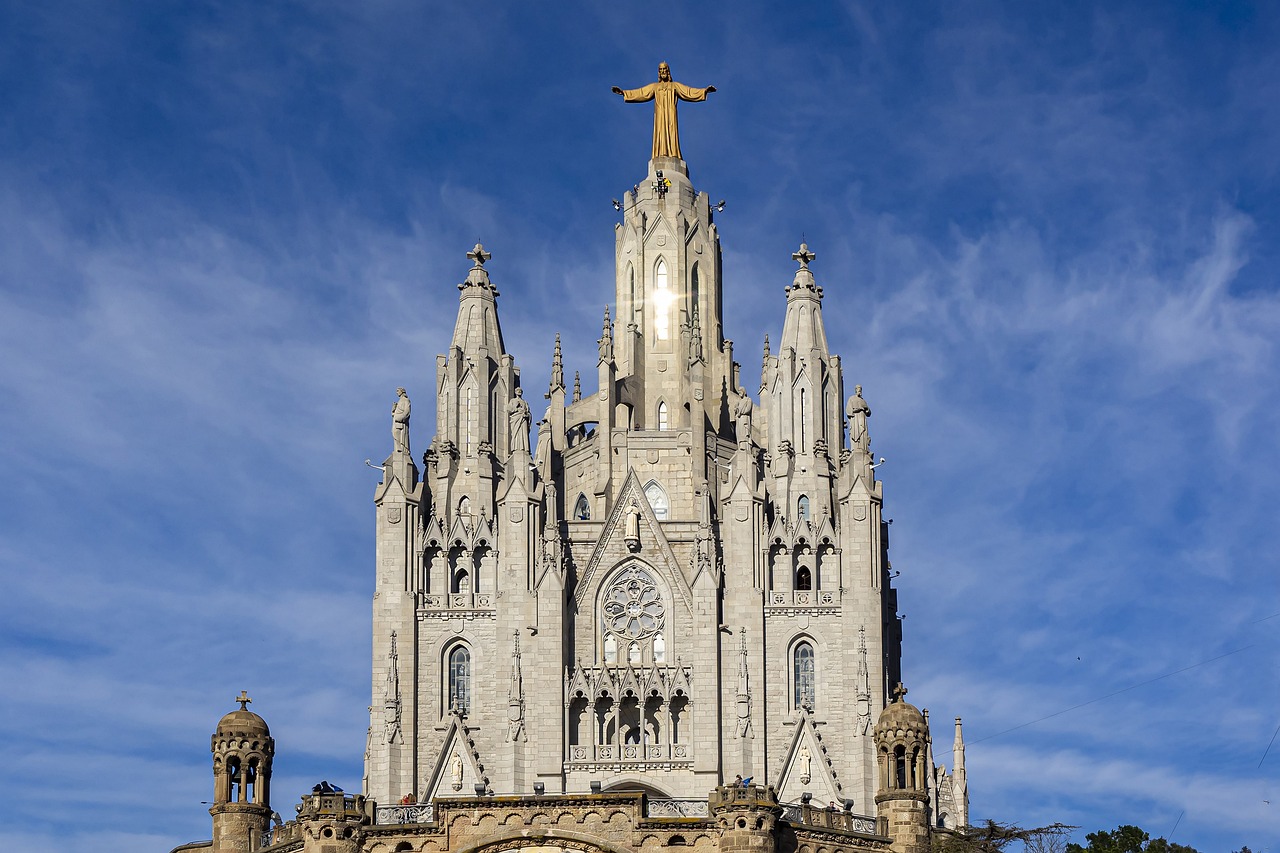
The Nature of Faith
Understanding Kierkegaard's perspective on faith is like peeling back the layers of an onion; each layer reveals a new complexity, a new paradox that challenges our conventional notions. For Kierkegaard, faith is not merely a set of beliefs or doctrines to follow; it is a deeply personal journey fraught with uncertainty and doubt. He invites us to explore faith not as a static concept but as a dynamic interplay between belief and skepticism. This exploration leads us to question: what does it truly mean to have faith in a world that often seems chaotic and unpredictable?
At its core, Kierkegaard's concept of faith diverges significantly from traditional religious interpretations. Instead of viewing faith as blind adherence to dogma, he emphasizes the importance of individual experience and subjective truth. This means that faith is not something that can be universally defined or understood; it is as unique as the individual who holds it. In this way, faith becomes a personal commitment, a leap into the unknown where one must confront their own doubts and uncertainties.
To illustrate this, consider the following key aspects that shape Kierkegaard's understanding of faith:
- Subjectivity: Faith is inherently personal and cannot be dictated by external authorities.
- Risk: The leap of faith requires an acceptance of risk, as one ventures into the unknown.
- Paradox: Faith exists in a paradoxical state where certainty and doubt coexist, challenging our need for absolute answers.
This nuanced understanding of faith is essential, especially when we consider how it interacts with doubt. In Kierkegaard's philosophy, doubt is not the enemy of faith but rather a crucial component that enriches it. It acts as a mirror reflecting our innermost fears and beliefs, prompting us to confront what we truly value. By embracing doubt, we can deepen our understanding of faith, transforming it from a simple acceptance into a profound personal conviction.
Moreover, Kierkegaard introduces the idea of the paradox of faith, where the believer must accept that certainty is often elusive. This paradox challenges us to reconcile our desire for knowledge with the acceptance of mystery. It's like trying to grasp water with your hands; the tighter you hold on, the more it slips away. In this way, faith becomes a journey of exploration rather than a destination to be reached.
Ultimately, Kierkegaard's exploration of the nature of faith encourages us to embrace the complexities and contradictions inherent in our beliefs. It invites us to embark on a personal journey where we can navigate our unique paths, confront our doubts, and discover what faith means to us individually. This journey is not just about finding answers; it's about engaging with the questions that shape our existence.
- What is Kierkegaard's definition of faith? Kierkegaard defines faith as a deeply personal commitment that involves subjective truth and the acceptance of uncertainty.
- How does doubt relate to faith in Kierkegaard's philosophy? Doubt is seen as a critical component of faith, enriching the believer's understanding and prompting deeper personal exploration.
- What is the paradox of faith? The paradox of faith refers to the coexistence of certainty and uncertainty, challenging conventional beliefs and encouraging personal inquiry.

The Role of Doubt
Doubt is often viewed as a negative force, something to be avoided at all costs. However, in the realm of Søren Kierkegaard's philosophy, doubt takes on a much more significant role. It is not merely an obstacle to faith; instead, it serves as a powerful catalyst that can deepen our understanding of belief and existence. Imagine doubt as a stormy sea, challenging a ship's captain to navigate through turbulent waters. Just as the captain learns to adjust their sails and steer with greater precision, so too can individuals learn to embrace their doubts to arrive at a more authentic faith.
In Kierkegaard's view, doubt is an essential part of the human experience. It prompts us to question our beliefs and confront the uncertainties inherent in life. By acknowledging our doubts, we open ourselves up to a richer exploration of faith. This exploration can be likened to peeling back the layers of an onion; each layer reveals more complexity and depth. When we allow ourselves to wrestle with our doubts, we often find that they lead us to newfound insights and a more profound commitment to our beliefs.
Furthermore, Kierkegaard posits that doubt is not the opposite of faith but rather an integral part of it. This relationship can be illustrated in the following ways:
- Challenge to Certainty: Doubt challenges our preconceived notions of certainty, forcing us to reassess what we truly believe.
- Growth through Struggle: Just as a muscle strengthens through resistance, our faith can become more robust when tested by doubt.
- Personal Reflection: Embracing doubt allows for deeper personal reflection, leading to a more authentic understanding of one's beliefs.
In this light, doubt becomes a necessary companion on the journey of faith. It encourages a deeper inquiry into the nature of existence and the meaning we assign to our experiences. Kierkegaard's notion of the leap of faith is not a blind jump into the unknown; rather, it is a deliberate and thoughtful act that emerges from grappling with uncertainty. The act of leaping is made all the more profound when it is informed by the questions and doubts we have encountered along the way.
Ultimately, embracing doubt can lead to a more authentic and personal faith experience. It allows us to confront our vulnerabilities and uncertainties, fostering a sense of resilience. In a world that often seeks clear answers, Kierkegaard invites us to find strength in our doubts. By doing so, we can embark on a journey that is not only about believing but also about understanding and evolving in our beliefs.
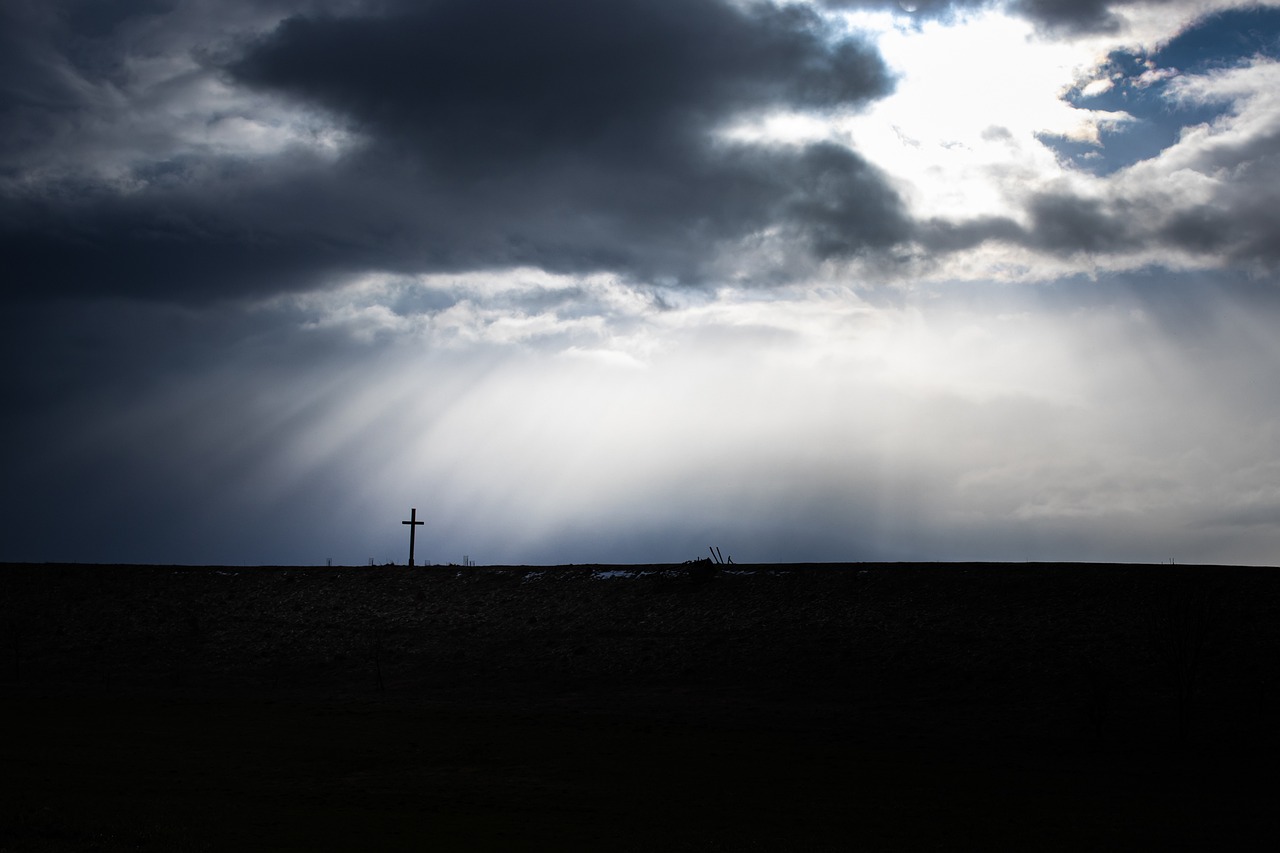
The Paradox of Faith
The paradox of faith is one of the most intriguing aspects of Søren Kierkegaard's philosophy. At its core, this paradox reveals a fascinating dance between certainty and uncertainty. Imagine standing at the edge of a cliff, gazing into the abyss below. You know that taking a leap could either lead to a transformative experience or a catastrophic fall. This imagery encapsulates the essence of faith as Kierkegaard sees it. It’s not merely a blind leap; it’s a conscious decision to embrace the unknown, while acknowledging the fear that accompanies it.
Kierkegaard argues that true faith requires an acceptance of this paradox. He suggests that faith is not about having absolute certainty; rather, it thrives in the midst of doubt. This idea challenges conventional religious beliefs that often emphasize unwavering conviction. For Kierkegaard, the existence of doubt is not a weakness but a vital part of the faith journey. It’s like navigating through a foggy landscape—while you can’t see the path ahead clearly, you move forward with trust in your steps.
To illustrate this paradox further, consider the following points:
- Faith as a personal journey: Each individual's relationship with faith is unique, shaped by personal experiences and existential questions.
- The coexistence of belief and doubt: True faith acknowledges doubt, allowing individuals to explore their beliefs more deeply.
- The transformative power of uncertainty: Embracing uncertainty can lead to a more profound understanding of oneself and the world.
This paradox not only challenges our understanding of faith but also encourages a more profound exploration of what it means to believe. It invites us to confront our uncertainties and to recognize that faith is as much about the questions we ask as it is about the answers we find. In a world that often seeks definitive answers, Kierkegaard’s perspective serves as a reminder that it’s okay to dwell in the gray areas of existence.
In summary, the paradox of faith is an invitation to engage with our beliefs in a more meaningful way. It encourages us to recognize that faith is not a destination but a journey filled with twists, turns, and unexpected revelations. By embracing this paradox, we can cultivate a richer, more authentic experience of faith that resonates with the complexities of our existence.
- What is the leap of faith according to Kierkegaard?
The leap of faith is the act of embracing belief despite uncertainty and doubt. It represents a personal commitment to faith that transcends rational understanding. - How does doubt relate to faith?
Doubt is seen as an integral part of faith in Kierkegaard's philosophy. It challenges individuals to explore their beliefs more deeply and can lead to a more authentic faith experience. - Why is the paradox of faith important?
The paradox of faith highlights the coexistence of certainty and uncertainty, encouraging individuals to engage with their beliefs in a meaningful way, rather than seeking absolute answers.

Doubt as a Catalyst
Doubt is often seen as a negative force, something to be avoided or overcome. However, in the context of Søren Kierkegaard's philosophy, doubt serves a much more profound purpose. Rather than simply being an obstacle to faith, doubt can act as a catalyst for personal growth and deeper understanding. Imagine doubt as a storm that shakes the foundations of your beliefs, forcing you to reevaluate and rebuild them on a sturdier base. It’s in these moments of uncertainty that we can truly explore the depths of our convictions.
Kierkegaard believed that grappling with doubt is essential for a genuine faith experience. He argued that without doubt, faith can become stagnant, a mere acceptance of dogma without any personal engagement. When we allow ourselves to question, we open the door to a more authentic relationship with our beliefs. This process can be uncomfortable, much like stepping out onto a tightrope without a safety net. Yet, it is through this precarious journey that we discover the strength of our convictions. We learn to embrace uncertainty, recognizing that it is a natural part of the human experience.
Moreover, doubt encourages us to seek answers and engage with the world around us. It prompts us to ask the tough questions, such as:
- What do I truly believe?
- Why do I hold these beliefs?
- How do these beliefs shape my actions and interactions?
By wrestling with these questions, we can cultivate a faith that is not just inherited or imposed but is instead deeply personal and reflective of our individual journeys. Kierkegaard’s leap of faith suggests that it is this very struggle with doubt that ultimately leads to a more profound and resilient faith. Just as a diamond is formed under pressure, our beliefs can be refined and strengthened through the heat of questioning.
In essence, doubt is not the enemy of faith; rather, it is a vital component of the journey toward understanding. It invites us to explore the complexities of our existence and encourages us to embrace the uncertainty that life presents. When we view doubt as a catalyst, we begin to appreciate its role in shaping our beliefs and enriching our spiritual lives. In a world that often seeks clear-cut answers, Kierkegaard’s perspective reminds us that the journey through doubt can be just as valuable as the destination of faith.
Q: What is the significance of doubt in Kierkegaard's philosophy?
A: Doubt is seen as a catalyst for personal growth and a deeper understanding of faith. It challenges individuals to question their beliefs and engage with them authentically.
Q: Can doubt coexist with faith?
A: Yes, Kierkegaard believed that doubt and faith can coexist. The struggle with doubt can ultimately lead to a stronger and more resilient faith.
Q: How can I embrace doubt in my own spiritual journey?
A: Start by asking yourself challenging questions about your beliefs and be open to exploring different perspectives. Allow yourself to sit with uncertainty and view it as an opportunity for growth.
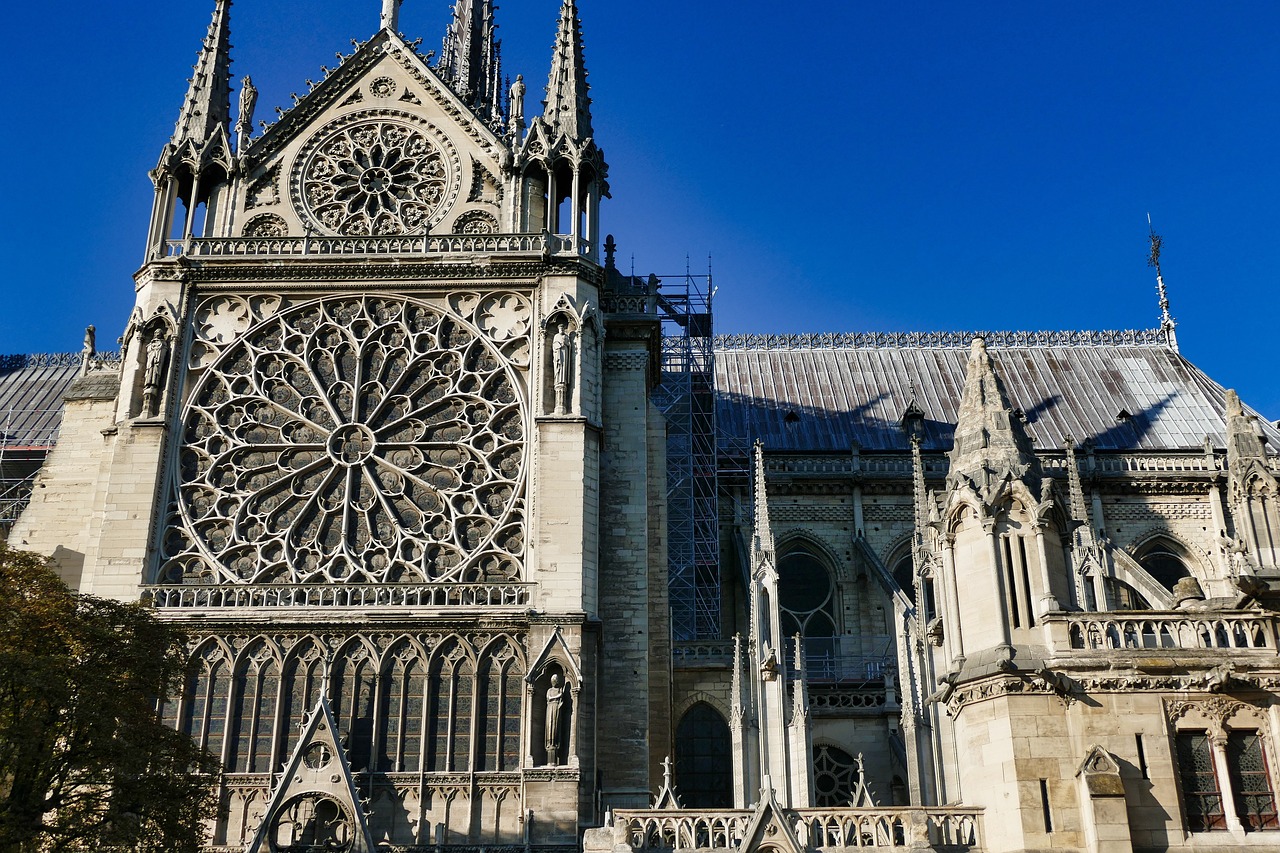
The Personal Journey
When we talk about the leap of faith, it’s essential to recognize that it’s not just a philosophical idea floating in the ether; it’s a deeply personal journey that each individual must navigate. Think of it like standing at the edge of a diving board, looking down into the unknown depths below. The leap isn’t just about the act of jumping; it’s about the emotions, the doubts, and the exhilaration that come with that decision. Kierkegaard emphasizes that faith is not merely about believing in something grand or divine; it’s about taking that leap into the uncertain waters of our own existence.
As we embark on this journey, we often find ourselves grappling with questions that challenge our understanding of belief and existence. What does it truly mean to have faith? Is it a blind trust, or is it something more profound that requires us to confront our fears and uncertainties? This personal exploration can lead us to moments of clarity, where we begin to understand that faith is not the absence of doubt but rather the acceptance of it. In Kierkegaard's view, this acceptance is crucial—it's like acknowledging that the water is cold before you dive in, yet deciding to jump anyway.
In our pursuit of faith, we may encounter various stages that resemble a transformative journey. Here’s a simple breakdown:
- Awareness: Recognizing our doubts and the need for a deeper understanding of our beliefs.
- Exploration: Questioning the foundations of our faith and seeking answers that resonate with our personal experiences.
- Acceptance: Embracing the uncertainties and deciding to take the leap, despite not having all the answers.
- Commitment: Making a conscious choice to live out our beliefs, knowing that doubt may still linger.
Each of these stages is not linear; they often overlap and intertwine, creating a rich tapestry of personal growth. Just like climbing a mountain, you may find yourself going back and forth between stages, sometimes feeling stuck in doubt and other times soaring with newfound conviction. This journey is uniquely yours, shaped by your experiences, relationships, and reflections.
Moreover, the leap of faith can also be viewed through the lens of community and shared experiences. While faith is a personal endeavor, it often flourishes in the company of others who are on similar paths. Engaging in discussions, sharing stories, and even facing challenges together can provide the support needed to make that leap feel less daunting. It’s like having a buddy system when you’re learning to swim; the presence of others can give you the courage to dive in.
Ultimately, Kierkegaard invites us to embrace the idea that the leap of faith is not a one-time event but a continuous journey. It’s about cultivating a mindset of openness and readiness to explore the depths of our beliefs, even when the waters seem murky. So, the next time you find yourself standing at the edge, remember: the leap is not just about where you land but about the courage it takes to jump in the first place.
Q1: What is the leap of faith according to Kierkegaard?
A1: The leap of faith is a concept introduced by Kierkegaard that emphasizes the necessity of taking a personal, subjective leap into belief, despite the presence of doubt and uncertainty.
Q2: How does doubt relate to faith in Kierkegaard's philosophy?
A2: In Kierkegaard's view, doubt is not the enemy of faith; rather, it is an integral part of the journey. Embracing doubt can lead to a deeper understanding and a more authentic faith experience.
Q3: Can the leap of faith be a collective experience?
A3: Yes, while the leap of faith is deeply personal, sharing experiences and discussions with others can enhance the journey, providing support and encouragement during times of uncertainty.

Implications for Modern Thought
Søren Kierkegaard's concept of the leap of faith is not just a relic of 19th-century philosophy; it resonates deeply within the fabric of modern thought. In a world where existential questions abound and traditional structures of belief are often challenged, Kierkegaard's insights provide a refreshing lens through which we can examine our own convictions. His emphasis on the individual's experience and the subjective nature of truth encourages a departure from dogmatic beliefs, inviting us to explore our personal journeys in the realm of faith and existence.
In contemporary society, where skepticism often reigns supreme, Kierkegaard's leap of faith serves as a beacon of hope for those grappling with uncertainty. The struggle to find meaning amidst chaos can feel overwhelming, yet Kierkegaard reminds us that doubt is not the enemy of faith; rather, it is an essential component of the journey. By engaging with our doubts, we can cultivate a deeper understanding of what it means to believe. This dynamic interplay between faith and doubt is crucial as it allows us to forge a more authentic connection to our beliefs.
Moreover, Kierkegaard's ideas have significant implications for various fields, including philosophy, psychology, and spirituality. For instance, in psychology, the exploration of personal beliefs and the confrontation of existential dilemmas have become focal points in therapeutic practices. Therapists often encourage clients to embrace their doubts and fears, recognizing that these experiences can lead to profound personal growth. By integrating Kierkegaardian thought into modern psychological frameworks, practitioners can help individuals navigate their unique paths toward self-discovery and fulfillment.
In the realm of spirituality, Kierkegaard's leap of faith challenges us to reconsider our approaches to belief systems. In a secular age where many feel disconnected from traditional religious institutions, his philosophy invites us to seek out personal and meaningful expressions of faith. This could manifest in various forms, from exploring new spiritual practices to engaging in community discussions about belief and existence. The key takeaway here is that faith need not be confined to a rigid structure; it can be a fluid and evolving journey.
As we delve deeper into Kierkegaard's influence on modern thought, we can observe how his emphasis on authenticity aligns with the principles of existentialism. The quest for genuine existence is a central theme in both Kierkegaard's work and contemporary existentialist philosophy. In a world saturated with superficiality and pretense, the call to live authentically resonates more than ever. Kierkegaard's leap of faith encourages us to confront our fears, embrace our uncertainties, and ultimately, step into the unknown with courage.
In summary, Kierkegaard's leap of faith is not merely a philosophical concept; it is a vital framework that continues to shape our understanding of belief, existence, and personal commitment. By engaging with his ideas, we can navigate the complexities of modern life with a renewed sense of purpose and authenticity. Whether we are grappling with personal doubts or seeking to understand our place in the world, Kierkegaard's insights offer profound guidance and inspiration.
- What is the leap of faith according to Kierkegaard?
The leap of faith is a personal and subjective act of believing in something despite the uncertainties and doubts that may exist. It emphasizes individual experience and the necessity of making a personal commitment to faith.
- How does doubt relate to faith?
Kierkegaard posits that doubt is an integral part of faith. Embracing doubt allows individuals to deepen their understanding of their beliefs and encourages a more authentic faith experience.
- Why is Kierkegaard relevant today?
His ideas resonate in contemporary discussions about existentialism, authenticity, and the challenges of belief in a secular age. Kierkegaard's insights provide a framework for navigating modern life's complexities.

Faith in a Secular Age
In our fast-paced, technology-driven world, the concept of faith often seems to take a backseat. We live in a secular age where traditional beliefs are frequently questioned, and skepticism reigns supreme. But what does it mean to have faith in such an environment? Kierkegaard's leap of faith provides a profound lens through which we can examine this dilemma. His philosophy suggests that faith is not merely a blind acceptance of dogma, but rather a deeply personal journey that requires courage and introspection.
In this secular context, many individuals find themselves grappling with the tension between belief and doubt. Kierkegaard posited that doubt is not the enemy of faith; instead, it can be a stepping stone towards a more profound understanding of one’s beliefs. This perspective encourages us to embrace uncertainty and view it as an integral part of our spiritual journey. By acknowledging our doubts, we can engage more authentically with our faith, allowing it to evolve rather than stagnate.
Moreover, Kierkegaard's insights resonate strongly with those seeking authenticity in their lives. In an age where social media often promotes curated versions of reality, the quest for genuine existence becomes increasingly challenging. People are yearning for something real, something that transcends the superficial. Kierkegaard’s leap of faith encourages individuals to make personal commitments to their beliefs, even when faced with existential uncertainties. This commitment can manifest in various ways, such as:
- Engaging in community service that reflects one’s values
- Exploring philosophical texts that challenge one’s worldview
- Participating in discussions that foster open-mindedness and understanding
By actively participating in these practices, individuals can cultivate a sense of faith that feels relevant and grounded in their experiences. Kierkegaard’s philosophy reminds us that faith is not a static concept but a dynamic process that evolves as we navigate the complexities of life. In a secular age, this dynamic nature of faith becomes crucial for personal growth and fulfillment.
Ultimately, Kierkegaard's leap of faith serves as a beacon of hope for those wrestling with the implications of living in a secular world. It encourages us to confront our doubts head-on and to view them as opportunities for deeper understanding. By doing so, we can foster a more resilient and authentic faith that not only survives but thrives amidst the uncertainties of modern existence.
Q: What is Kierkegaard's leap of faith?
A: Kierkegaard's leap of faith refers to the act of believing in something despite the uncertainties and doubts that accompany it. It emphasizes a personal commitment to faith that transcends rational understanding.
Q: How does doubt relate to faith in Kierkegaard's philosophy?
A: Doubt is seen as an essential part of the journey towards faith. According to Kierkegaard, embracing doubt can lead to a deeper and more authentic understanding of one’s beliefs.
Q: Why is authenticity important in today's secular society?
A: In a world filled with superficiality, authenticity allows individuals to connect with their true selves and their beliefs. Kierkegaard's emphasis on personal commitment helps foster genuine experiences in a secular age.

Existentialism and Authenticity
When we dive into the rich tapestry of existentialism, we find that it is not just a philosophical framework; it is a call to live authentically. At the heart of this philosophy is the idea that each individual is responsible for creating their own meaning in a world that often seems devoid of it. Søren Kierkegaard’s concept of the leap of faith resonates deeply within this context, as it challenges us to confront our own beliefs and experiences head-on. But what does it mean to live authentically in a society that often pushes conformity?
To grasp this, we must first understand that authenticity is not merely about being true to oneself; it's about recognizing the paradox of existence. Kierkegaard posits that in order to embrace our true selves, we must first acknowledge the uncertainties and doubts that accompany our beliefs. This is where the leap of faith comes into play. It’s not a blind jump into the unknown but rather a conscious choice to engage with our doubts and uncertainties, allowing them to inform our journey toward authenticity.
In Kierkegaard's view, authenticity involves a deep engagement with our feelings, thoughts, and experiences. It requires us to ask ourselves tough questions: What do I truly believe? What values guide my actions? Am I living in accordance with my own principles or simply following societal expectations? This introspection is crucial because it allows us to peel away the layers of societal conditioning that often obscure our true selves. The leap of faith is, therefore, a personal journey that each individual must undertake, one that leads to a more profound understanding of oneself.
Moreover, Kierkegaard's emphasis on the individual experience aligns closely with the existentialist notion that each person must carve out their own path. In a world filled with noise and distractions, the challenge is to listen to our inner voice and to act in ways that reflect our true beliefs. This is where authenticity shines. It’s about being unapologetically yourself, even when faced with external pressures to conform.
Consider the following table that illustrates the relationship between existentialism and authenticity:
| Existentialism | Authenticity |
|---|---|
| Focuses on individual existence and freedom | Emphasizes being true to oneself |
| Encourages questioning of societal norms | Promotes self-reflection and personal values |
| Views life as inherently uncertain | Accepts doubt as part of the journey |
| Values personal responsibility | Encourages taking ownership of one's choices |
As we navigate through life, Kierkegaard reminds us that authenticity is not a destination but a continuous process. It involves making choices that resonate with our deepest beliefs and values, even when those choices are difficult. The leap of faith, therefore, becomes a transformative act that allows us to embrace our true selves amidst the chaos of existence.
In conclusion, Kierkegaard's insights into existentialism and authenticity provide a powerful framework for understanding our place in the world. By daring to leap into the unknown, we open ourselves up to a life filled with meaning, purpose, and genuine connection to ourselves and others. So, the next time you find yourself at a crossroads, remember that your journey toward authenticity is uniquely yours, and it begins with a single, courageous leap of faith.
- What is the leap of faith according to Kierkegaard? The leap of faith is a personal commitment to embrace belief despite uncertainty and doubt.
- How does existentialism relate to authenticity? Existentialism emphasizes individual experience and the responsibility to create one's own meaning, which aligns with the pursuit of authenticity.
- Can doubt lead to a stronger faith? Yes, Kierkegaard believed that embracing doubt can deepen one’s understanding of faith and lead to a more authentic belief system.
- Is authenticity a one-time achievement? No, authenticity is a continuous process of self-discovery and alignment with personal values.
Frequently Asked Questions
- What is Kierkegaard's leap of faith?
Kierkegaard's leap of faith refers to the idea that faith is not just a rational belief but requires a personal commitment that transcends doubt and uncertainty. It's about making a conscious choice to believe despite the lack of absolute proof, embracing the unknown with courage.
- How does doubt relate to faith in Kierkegaard's philosophy?
Doubt is a crucial element in Kierkegaard's understanding of faith. He argues that grappling with doubt can actually deepen one's faith. Rather than seeing doubt as a negative force, he suggests it can lead to a more authentic and personal belief system, allowing individuals to confront their uncertainties head-on.
- What are the paradoxes of faith according to Kierkegaard?
Kierkegaard highlights that faith is inherently paradoxical. It involves a tension between certainty and uncertainty, where one must accept that absolute knowledge is unattainable. This paradox challenges conventional beliefs and encourages individuals to explore their faith journey more deeply.
- Can the leap of faith be considered a personal journey?
Absolutely! The leap of faith is not just a philosophical concept; it reflects a deeply personal journey. Each individual must navigate their unique path in confronting issues of belief, existence, and personal commitment, making it a highly subjective experience.
- How do Kierkegaard's ideas influence modern thought?
Kierkegaard's concepts resonate strongly in contemporary discussions about faith, existentialism, and authenticity. His leap of faith provides valuable insights for navigating belief in an increasingly secular world, encouraging individuals to seek genuine existence amidst uncertainty.
- What relevance does Kierkegaard's leap of faith have in today's secular society?
In a world often skeptical of faith, Kierkegaard's leap of faith serves as a guide for those grappling with belief. His ideas encourage individuals to embrace their uncertainties and make personal commitments to faith, fostering a deeper understanding of their spiritual journeys.
- How does Kierkegaard's emphasis on authenticity connect with existentialism?
Kierkegaard's focus on authenticity aligns closely with existentialist thought. His leap of faith encourages individuals to seek genuine existence by confronting their beliefs and doubts, promoting a life that is true to oneself amidst the complexities of modern life.

